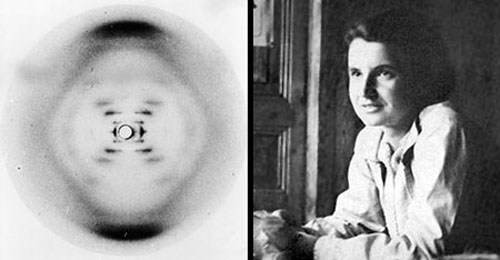According to Rosalind Franklin, it is not fair to separate science and everyday life as science gives to her a partial explanation of life.
She may not have due recognition during her lifetime for her scientific work, but hard work never fails! Today, Rosalind Franklin is a bright star who is still illuminating the lives of many aspiring women scientists.
She received posthumous recognition for her work and was awarded an honorary Louisa Gross Horwitz Prize by Columbia University in 2008. Also, there is even an asteroid named after her name. So, have a look at her fascinating and inspiring journey.
Early Childhood
Born on July 25, 1920, in a wealthy Jewish family in London, Rosalind Franklin was the second among five children. Both her father and mother were active in community services.
During childhood, Rosalind exhibits her love for science subjects. She also showed an inclination towards learning multiple languages.
In fact, Rosalind became excellent in French and Italian! She also loves to sing and go on long family vacations.
Education
Rosalind Franklin, since her childhood days, had exhibited an aptitude for science and math. So, she first gets enrolled in a boarding school in Sussex.
Then, she attended a prestigious school for girls. At that time, it was one of the few schools where physics and chemistry were taught to girls.
In 1938, she got admission to the Newnham College (University of Cambridge) to study physical chemistry.
She even received a fellowship after graduating in 1941 to conduct research work in physical chemistry, but World War II compelled her to change her decision.
She started to work at the British Coal Utilization Research Association (BCURA). It was her work over there that become her doctoral thesis.
In 1945, she received her doctorate for the same from Cambridge University.
Work
Franklin started to find a job after receiving her doctoral degree, and in 1946, she moves to Paris. She gets a job at the Central State Laboratory for Chemical Services, where she learns how to use the X-RAY rays for the sake of creating images of crystallized solids.
However, Rosalind left Paris in January 1951 after obtaining a three-year fellowship to start working at the John T. Randall’s Biophysics Unit of the King’s College London.
Rosalind began to investigate the DNA at the suggestion of Maurice Wilkins, who was the assistant lab chief.
At the College, while working with a graduate student Raymond Gosling, she discovered that there are two forms of x-ray diffraction photos of DNA, and both are very different from each other.
It was because of one of her images that gives other scientists a vital clue to discover the double helix DNA structure in 1953, and they even received a Nobel Prize in medicine! Franklin, however, does not complain and quietly left the place in 1953 to join the Birkbeck College, the University of London.
There she studied the structure of virus and RNA. Her illustrious career was cut short when she was diagnosed with ovarian cancer.

Rosalind Franklin died on April 16, 1958, when she was 37 years old, but not without leaving a strong legacy.
The British Government has created an annual award in recognition of her crucial scientific work that led to the discovery of the structure of DNA.
There is also the Rosalind Franklin Young Investigator Award, which is funded by the Gruber Foundation, America.
https://www.britannica.com/biography/Rosalind-Franklin
https://www.nature.com/scitable/topicpage/rosalind-franklin-a-crucial-contribution-6538012/


